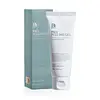What's inside
What's inside
 Key Ingredients
Key Ingredients

 Benefits
Benefits

 Ingredients Side-by-side
Ingredients Side-by-side

Vigna Radiata Seed Extract
Skin ConditioningWater
Skin ConditioningGlycerin
HumectantGossypium Herbaceum Powder
AbsorbentCaprylic/Capric Triglyceride
MaskingSteartrimonium Methosulfate
1,2-Hexanediol
Skin ConditioningPolyglyceryl-10 Laurate
Skin ConditioningHydrogenated Poly(C6-14 Olefin)
EmollientDipropylene Glycol
HumectantAcrylates/C10-30 Alkyl Acrylate Crosspolymer
Emulsion StabilisingCoptis Japonica Extract
AntimicrobialPolyglycerin-3
HumectantMethyl Gluceth-20
HumectantMethyl Gluceth-10
EmulsifyingGlycereth-26
HumectantCarbomer
Emulsion StabilisingButylene Glycol
HumectantLactobacillus/Soymilk Ferment Filtrate
Skin ConditioningGlycine Soja Seed Extract
Skin ConditioningPropanediol
SolventDextrin
AbsorbentDisodium EDTA
Hydrolyzed Soy Protein
HumectantSodium Citrate
BufferingGardenia Florida Fruit Extract
Skin ConditioningEthylhexylglycerin
Skin ConditioningPanthenol
Skin ConditioningHydrogenated Lecithin
EmulsifyingAllantoin
Skin ConditioningTrisodium Phosphate
BufferingGluconolactone
Skin ConditioningXanthan Gum
EmulsifyingCapryloyl Salicylic Acid
ExfoliatingSodium Hyaluronate
HumectantHyaluronic Acid
HumectantVigna Radiata Seed Extract, Water, Glycerin, Gossypium Herbaceum Powder, Caprylic/Capric Triglyceride, Steartrimonium Methosulfate, 1,2-Hexanediol, Polyglyceryl-10 Laurate, Hydrogenated Poly(C6-14 Olefin), Dipropylene Glycol, Acrylates/C10-30 Alkyl Acrylate Crosspolymer, Coptis Japonica Extract, Polyglycerin-3, Methyl Gluceth-20, Methyl Gluceth-10, Glycereth-26, Carbomer, Butylene Glycol, Lactobacillus/Soymilk Ferment Filtrate, Glycine Soja Seed Extract, Propanediol, Dextrin, Disodium EDTA, Hydrolyzed Soy Protein, Sodium Citrate, Gardenia Florida Fruit Extract, Ethylhexylglycerin, Panthenol, Hydrogenated Lecithin, Allantoin, Trisodium Phosphate, Gluconolactone, Xanthan Gum, Capryloyl Salicylic Acid, Sodium Hyaluronate, Hyaluronic Acid
Water
Skin ConditioningCellulose
AbsorbentPentylene Glycol
Skin ConditioningCoco-Caprylate/Caprate
EmollientGlycerin
HumectantAmmonium Acryloyldimethyltaurate/Vp Copolymer
Chrysanthemum Sinense Flower Extract
CleansingCeramide NP
Skin ConditioningSodium Hyaluronate
HumectantDipotassium Glycyrrhizate
HumectantLactobionic Acid
BufferingAllantoin
Skin ConditioningPropanediol
SolventCaprylic/Capric Triglyceride
MaskingHydrogenated Lecithin
EmulsifyingPhytosteryl/Octyldodecyl Lauroyl Glutamate
Skin ConditioningSodium Gluconate
Skin ConditioningEthylhexylglycerin
Skin ConditioningWater, Cellulose, Pentylene Glycol, Coco-Caprylate/Caprate, Glycerin, Ammonium Acryloyldimethyltaurate/Vp Copolymer, Chrysanthemum Sinense Flower Extract, Ceramide NP, Sodium Hyaluronate, Dipotassium Glycyrrhizate, Lactobionic Acid, Allantoin, Propanediol, Caprylic/Capric Triglyceride, Hydrogenated Lecithin, Phytosteryl/Octyldodecyl Lauroyl Glutamate, Sodium Gluconate, Ethylhexylglycerin
 Reviews
Reviews

Ingredients Explained
These ingredients are found in both products.
Ingredients higher up in an ingredient list are typically present in a larger amount.
Allantoin is a soothing ingredient known for its protective and moisturizingg properties. Because of this, it is often added to products with strong active ingredients.
Studies show higher concentrations of this ingredient can promote wound healing.
Though it can be derived from the comfrey plant, allantoin is produced synthetically for cosmetic products to ensure purity.
Learn more about AllantoinThis ingredient is an emollient, solvent, and texture enhancer. It is considered a skin-softener by helping the skin prevent moisture loss.
It helps thicken a product's formula and makes it easier to spread by dissolving clumping compounds.
Caprylic Triglyceride is made by combining glycerin with coconut oil, forming a clear liquid.
While there is an assumption Caprylic Triglyceride can clog pores due to it being derived from coconut oil, there is no research supporting this.
Learn more about Caprylic/Capric TriglycerideEthylhexylglycerin (we can't pronounce this either) is commonly used as a preservative and skin softener. It is derived from glyceryl.
You might see Ethylhexylglycerin often paired with other preservatives such as phenoxyethanol. Ethylhexylglycerin has been found to increase the effectiveness of these other preservatives.
Glycerin is already naturally found in your skin. It helps moisturize and protect your skin.
A study from 2016 found glycerin to be more effective as a humectant than AHAs and hyaluronic acid.
As a humectant, it helps the skin stay hydrated by pulling moisture to your skin. The low molecular weight of glycerin allows it to pull moisture into the deeper layers of your skin.
Hydrated skin improves your skin barrier; Your skin barrier helps protect against irritants and bacteria.
Glycerin has also been found to have antimicrobial and antiviral properties. Due to these properties, glycerin is often used in wound and burn treatments.
In cosmetics, glycerin is usually derived from plants such as soybean or palm. However, it can also be sourced from animals, such as tallow or animal fat.
This ingredient is organic, colorless, odorless, and non-toxic.
Glycerin is the name for this ingredient in American English. British English uses Glycerol/Glycerine.
Learn more about GlycerinHydrogenated Lecithin is created from the hydrogenation of lecithin (a group of phospholipids). Hydrogenation is a chemical reaction between hydrogen and another element.
This ingredient is an emollient and emulsifier. As an emollient, it helps soften skin by trapping moisture within. As an emulsifier, it prevents oil and water ingredients from separating.
Propanediol is an all-star ingredient. It softens, hydrates, and smooths the skin.
It’s often used to:
Propanediol is not likely to cause sensitivity and considered safe to use. It is derived from corn or petroleum with a clear color and no scent.
Learn more about PropanediolSodium Hyaluronate is hyaluronic acid's salt form. It is commonly derived from the sodium salt of hyaluronic acid.
Like hyaluronic acid, it is great at holding water and acts as a humectant. This makes it a great skin hydrating ingredient.
Sodium Hyaluronate is naturally occurring in our bodies and is mostly found in eye fluid and joints.
These are some other common types of Hyaluronic Acid:
Learn more about Sodium HyaluronateWater. It's the most common cosmetic ingredient of all. You'll usually see it at the top of ingredient lists, meaning that it makes up the largest part of the product.
So why is it so popular? Water most often acts as a solvent - this means that it helps dissolve other ingredients into the formulation.
You'll also recognize water as that liquid we all need to stay alive. If you see this, drink a glass of water. Stay hydrated!
Learn more about Water